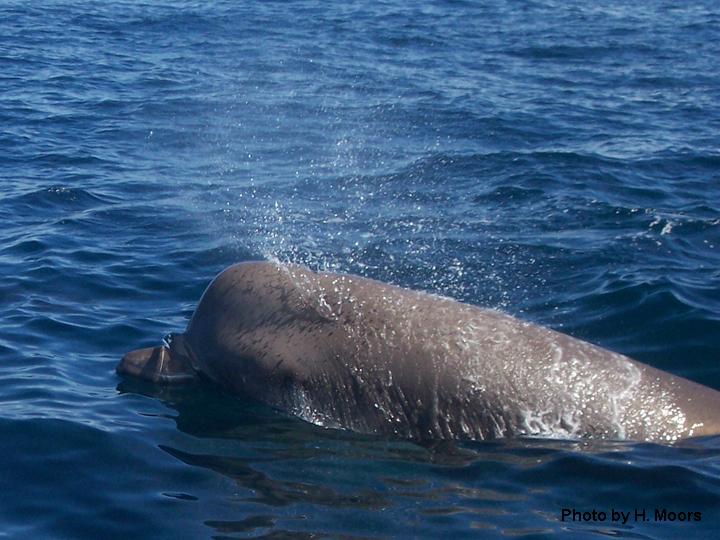Bottlenose whales are members of the beaked whale family and are easily recognized by a large round bulging forehead sitting atop a very short beak. As males age, their head becomes even larger (in size not ego) and eventually forms a rectangle look with a steep rise and abrupt corner leading to the rest of the body. Females stick with a more rounded look. Males also sport two small teeth on the front lower jaw while females find no teeth more fashionable.
The color of bottlenose whales varies between brown to yellow along a body that reaches up to 30 feet in length. These deep divers are “almost always in water deeper than 500m [1,640 feet],” according to the Encyclopedia of Marine Mammals. And two whales that were tagged with time-depth recorders were routinely diving 1,400 meters (4,593 feet). Why? To dine on squid of the genus Gonatus. Interesting name I must say for a genus that includes 12 species of squid.
Bottlenose whales are commonly seen hanging out in groups of one to four. Females appear to be social and maintain “associations with most members of the community.” But adult males actually form long lasting bonds with other males and hang out together for years. Because why hang out in the ocean alone, when you can hang out with friends?
Of course whalers went after bottlenose whales too. It’s not clear how many were killed, but thankfully there are still some bottlenose whales left. The question remains…how many?

Hey, I’ve never heard of bottlenose whales before. Thanks again, Wild Things, for opening my mind up to a new creature of the sea!
It seems that the squid genus Gonatus sounds, appropriately, like “Gonna eat us.” Thanks for the deep-sea info.